What Does Kimchi Taste Like?
When you buy through our links, The Breslin may earn an affiliate commission. Learn more
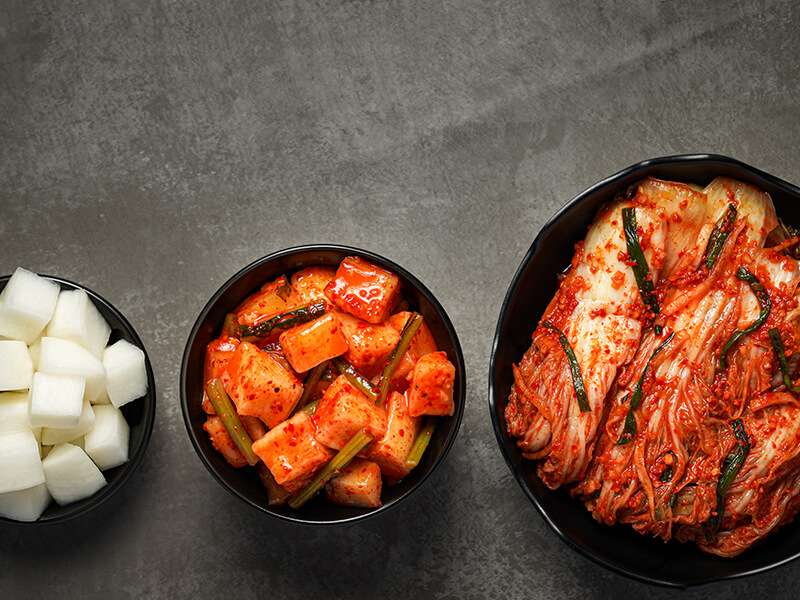
“What does kimchi taste like” is a commonly discussed topic by many diners. Kimchi is a fantastic traditional Korean food. It is used commonly not only in Korea but also in many Asian countries.
I am sure that most of you do not know the exact taste of kimchi, although you have tried it before. But, do not worry about it! This article will help you answer all questions about the flavor of kimchi as well as some fantastic relevant information.
I do not want you to miss any helpful knowledge about this topic, so please try to gain everything I am about to convey. Keep focusing on the article as all amazing things are waiting for you.
Perhaps You Do Not Know This Information About The Taste Of Kimchi
You can find many flavors in kimchi. The taste of kimchi depends on your preference. However, I feel the spicy, sweet, umami, and sour taste of fermented vegetables, when enjoying kimchi.
- Spicy: Because of the chilli pepper appearance, kimchi has a typical spiciness. Its spiciness depends on the amount of chilli pepper you add.
- Sweet And Salt: You need to add sugar and salt in the kimchi, so you can feel the sweet and salty taste when consuming it.
- Sour Taste: Lactic acid is produced in the fermentation process of kimchi that leads to the sour taste of kimchi.
- Umami Taste: Kimchi contains fish sauce, so it has a characteristic umami taste.
- Garlic Taste: You can feel a bit of garlic taste when consuming kimchi.
- Vegetable Taste: Since vegetables are the main ingredients of kimchi, the veggies taste is a distinctive flavor of kimchi.
Warming Up With Some Famous Knowledge About Kimchi
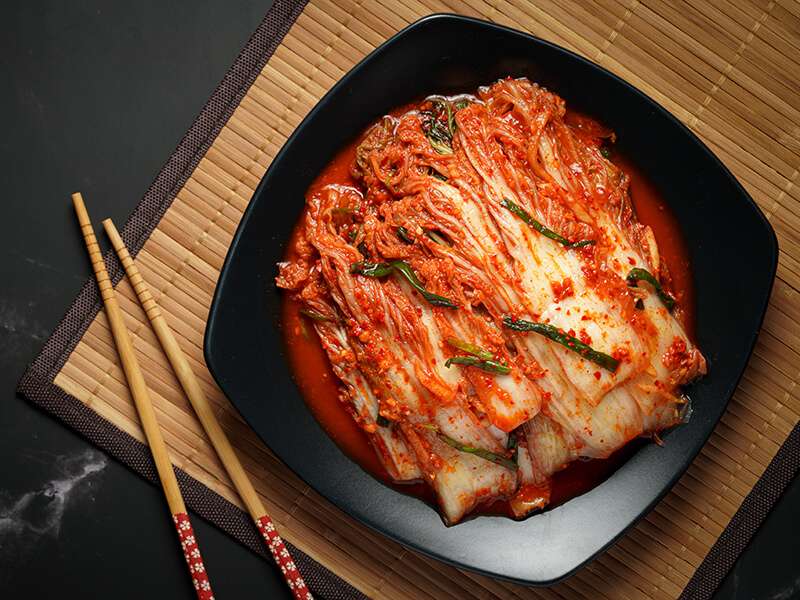
Kimchi is a familiar and traditional dish of Korean people. Kimchi is made from soaking and fermenting vegetables with other ingredients, such as ginger, garlic, salt, fish sauce, and chili peppers.
In fact, cabbage is the most commonly used vegetable to make kimchi. Alternatively, you can also use carrots, radishes, or cucumbers to make kimchi to your liking. Many different kimchi recipes depend on the regions.
Today, kimchi has become a famous dish and is sold in many countries around the world, so you can find it in supermarkets or Asian food stores. Kimchi is a plant-based dish, so it is very suitable for you to lose weight.
The Taste Secrets Of Kimchi Are About To Reveal Now!
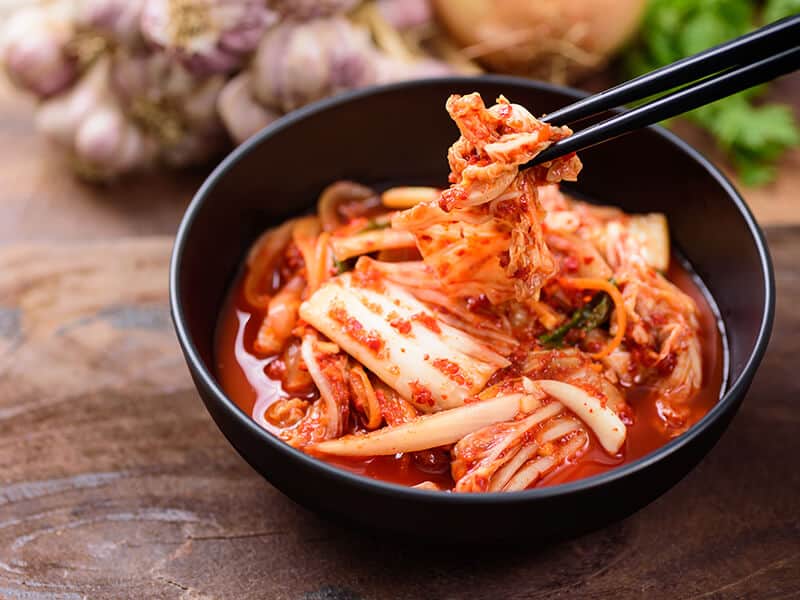
Kimchi is a dish that combines many different ingredients, so the taste of kimchi is pretty diverse. The flavor of kimchi depends on the type of vegetables you use, the fermentation time, and the number of spices you add.
So that you can understand more specifically and detail the exact taste of kimchi, I will give you a table showing the flavors you can find in kimchi. Let’s take a closer look right away.
| Kimchi Flavors | Description |
| Sour Tastes | The flavor that you can easily notice when enjoying kimchi and other fermented foods is the characteristic sour taste. Kimchi becomes sour and tangy because of lactic acid. |
| Umami Taste | Umami is a flavor that you will easily find in dishes containing fish or fish products. Though umami is an indispensable part of kimchi, not everyone favors the fish smell. So, you can cut down on the fish sauce, keeping your kimchi light and fresh. |
| Spicy Tastes | You will feel the slightly spicy taste when enjoying kimchi. However, kimchi will be more spicy if you add more chili pepper during the kimchi-making process. Thanks to chilli pepper, kimchi has an eye-catching red color. |
| Sweet And Salt Tastes | Kimchi is a pretty delicious dish because of its salty and sweet taste. The saltiness and sweetness of kimchi depend on the amount of sugar and salt you add. |
| Garlic Tastes | Garlic is an indispensable ingredient when making kimchi. Garlic gives kimchi its distinctive flavor and aroma. The taste of garlic will help create a highlight for kimchi. |
| Vegetable Flavors | It is impossible not to mention the flavor of the main ingredient that makes up kimchi, which is vegetables. The taste will be mild if you make kimchi with cucumber, carrot, or radish. If you want to give your kimchi an intense flavor, you can use cabbage to make kimchi. It is also the most commonly used method. |
Furthermore, kimchi has both soft and crunchy textures that depend on which ingredient you choose to make kimchi. Cucumbers and carrots will make kimchi crunchier. If you want to enjoy both soft and crunchy kimchi, you should use cabbage as a main vegetable.
Listen to the feelings of Americans when enjoying kimchi for the first time.
Kimchi And Sauerkraut Have The Same Taste, Haven’t They?
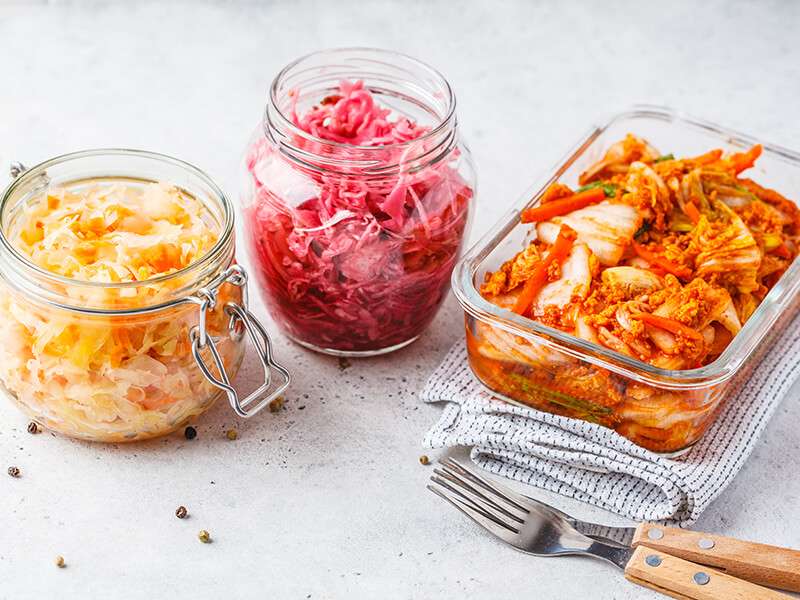
Kimchi and sauerkraut are both popular Korean dishes. Both are rich sources of fiber for your body. Even though both have similar cooking methods, their taste has a few differences.
To have a precise comparison between kimchi and sauerkraut, you should look at the table below right away!
| Sauerkraut | Kimchi |
| ● Sauerkraut is less spicy than kimchi because of the low pepper amount. ● Sauerkraut is made from shredded cabbage, and the flavor of sauerkraut is not richer than kimchi. ● Sauerkraut is not as salty as kimchi. ● Sauerkraut has a higher fermentation temperature than kimchi. | ● Kimchi has a much higher spiciness because more chili peppers are added during the kimchi-making process to give spiciness and color to kimchi ● Kimchi is made from cabbage stems, leaves, and other components, such as peppers, garlic, ginger, and fish sauce, so kimchi has a richer flavor. ● Kimchi has a slightly saltier taste than sauerkraut. |
The Roles Of Kimchi In The Culinary World
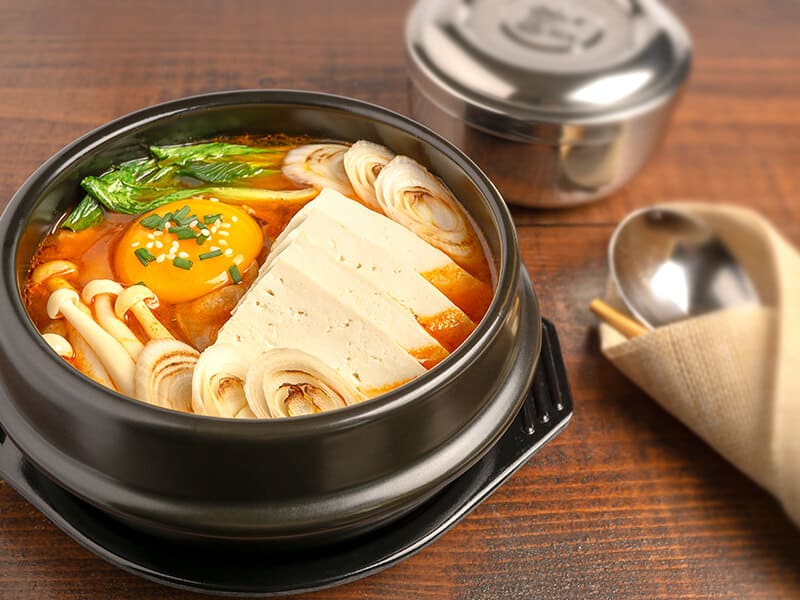
Thanks to its special and attractive flavor, kimchi is widely used in cuisine. There are many ways to enjoy and combine kimchi effectively. This section will give you wonderful methods to take advantage of kimchi in culinary.
- Enjoying Kimchi By Itself
One way to enjoy kimchi that you can easily come across is to eat kimchi directly. You can use it as a delicious snack. You should cut kimchi into bite-sized pieces. You will feel the full flavor of kimchi when you enjoy it this way.
- Kimchi And Rice Is A Perfect Combination
Your fried rice will be more delicious and flavorful with kimchi. It adds a characteristic tangy taste and an eye-catching color to fried rice. You should add kimchi last after the other ingredients have been fried.
- Making Yummy Fritters Or Pancakes With Kimchi
If you want to add flavor to your fritters or pancakes, you should use kimchi. It will bring crunchiness to the dishes. You will feel the spicy-sour taste which can stimulate your taste buds – combining with a few other ingredients for a richer taste.
- Using Kimchi In Braised Dishes Is The Great Choice
Since kimchi has a rather rich flavor, you can combine it in many different styles. Braised dishes with the appearance of kimchi will become more robust and delicious. You can braise kimchi with pork, beef, and especially with chicken.
- Adding Kimchi In Stew Or Hot Pot Dishes
I have to admit that stews and hot pot dishes that include kimchi are always excellent. Kimchi both adds color and flavor to hot pot and stew dishes. It is great to enjoy a hot pot or tofu stew with kimchi on cold days.
- Combing Kimchi In Egg Dishes And Pasta Sauce
You can also pair kimchi with egg dishes for breakfast. Combining kimchi and butter as a substitute for tomatoes in pasta sauce is also a fantastic idea. Kimchi will bring new experiences to these dishes.
- Do Not Throw Away The Liquid
Throwing away the liquid after eating the kimchi is a bad decision. You should keep it and combine it with sour cream or mayo to make a dipping sauce. Moreover, the salad becomes more special when there is kimchi liquid in the salad dressing.
Fill Your Stomach With Some Delicious Kimchi Recipes
There are many delicious dishes prepared with kimchi. Let’s learn these kimchi recipes to complement your lunch menu. It is not too difficult to do them.
1. Kimchi Dumplings (Kimchi Mandu)
Kimchi dumplings are a fairly popular dish in Korea. The dish is a combination of kimchi, minced pork and beef. Wrap it all up with a dumpling wrapper. You will feel the tenderness of the meat accompanied by the crispiness and distinctive flavor of kimchi.
Following these instructions to create yummy kimchi dumplings for your dinner.
2. Kimchi Fried Rice (Kimchi Bokkeumbap)
Kimchi bokkeumbap is a fantastic dish that represents the perfect combination of rice and kimchi. You will realize the aroma of kimchi and some of its spicy taste when enjoying this dish. A little bacon will make the dish more attractive.
3. Kimchi Stew (Kimchi Jjigae)
Stew dishes with kimchi always bring out great flavors. When consuming kimchi jjigae, you will feel the fatty taste of pork, the smoothness of tofu, and the familiar sour taste of kimchi. This is a perfect choice for winter days.
Watch this video to know more:
4. Kimchi Pancake (Kimchi Buchimgae)
Kimchi buchimgae is a famous dish at Korean restaurants. You do not need to spend too much time making this cake. A wonderful dipping sauce will enhance the value of this dish.
5. Kimchi Pork Tofu Stir-Fried (Dubu Kimchi)
Starting the party with dubu kimchi is an incredible choice. The wonderful taste of the pork, accompanies the spiciness of kimchi, and the mild flavor of tofu makes for the perfect addition to the dish.
Let’s Experience The Feeling Of Making Kimchi Like A Korean
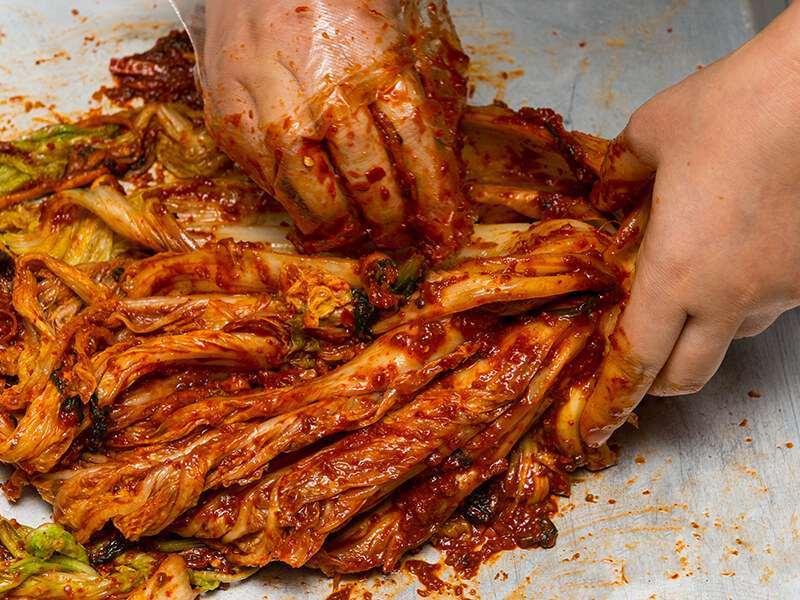
Instead of buying kimchi at a store, you can make your kimchi at home according to the following recipe to be able to treat your family with scrumptious kimchi. I did it, and you can do it too.
It would help if you prepared a few essential things before making kimchi. Let’s prepare cabbage, garlic, fresh ginger, fish sauce, red pepper, sugar, salt, and some equipment, such as a cutting board, knife, large bowl, and container.
If you want to enjoy delicious kimchi, let’s follow my instructions below:
- Step 1: Cut the cabbage along the stem into different quarters.
- Step 2: Put cabbage in a bowl. Add salt and massage with your hands until the cabbage is softer. Add a sufficient amount of water and soak the cabbage for 1 to 2 hours. Remember to cover the bowl.
- Step 3: After 1 to 2 hours, wash the cabbage with cold water 3 times. Place the cabbage in the colander for 15 to 20 minutes to drain.
- Step 4: Stir the mixture of ginger, sugar, garlic, pepper, fish sauce, shrimp paste, and water to form spice paste.
- Step 5: Squeeze all the water in the cabbage out, and combine cabbage with spice paste.
- Step 6: Mix the spice paste with the cabbage until the spice paste coats the cabbage evenly.
- Step 7: Put the kimchi into the jar layer by layer, and press the kimchi down.
- Step 8: Close the kimchi jar tightly to prevent dirt.
- Step 9: Place kimchi in a cool place and out of direct sunlight to ferment for 1 to 5 days.
- Step 10: Check the status of kimchi daily to know if you can eat kimchi.
Making fantastic Korean-style kimchi at home to consume immediately. Watch this video to know more:
Check These Methods To Preserve Kimchi For Longer
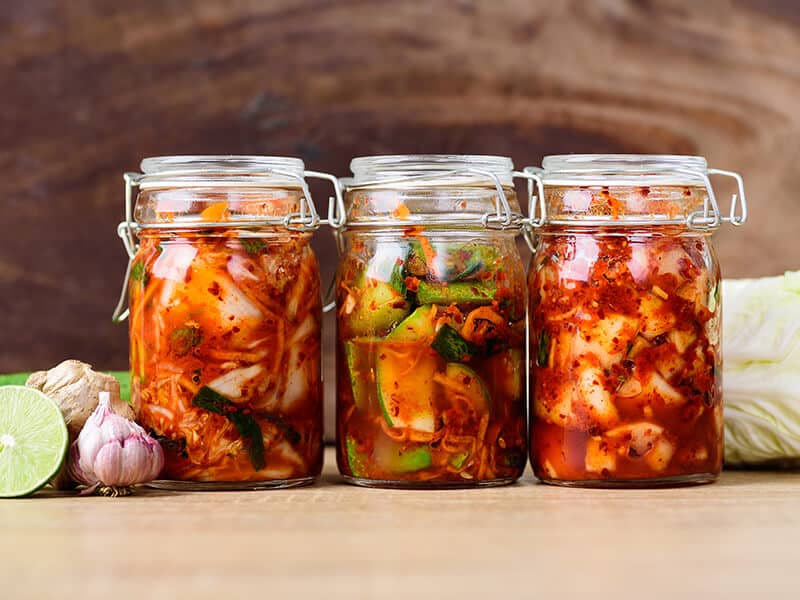
For kimchi, after being fermented, if you do not store it well, the kimchi will spoil quickly. To be able to preserve kimchi well and adequately, you should refer to the following methods.
Storing Kimchi In The Fridge Is Always A Perfect Method
If your kimchi is ready to enjoy or opened, you should store kimchi in the refrigerator to keep the quality of kimchi. I will show you how to store kimchi in the refrigerator without the smell. Continue to check these directions for kimchi storage.
- Step 1: Cover the kimchi jar with a layer of plastic wrap.
- Step 2: Close the jar tightly with the lid.
- Step 3: Put the kimchi jar in a sealed bag.
- Step 4: Put the bag in the fridge to preserve kimchi.
By Freezing, You Can Keep Kimchi Longer
Freezing is another way you can use to preserve kimchi. Frozen kimchi will keep for a long time. It is not complicated to store kimchi by freezing. You just need to spend a little time to freeze it.
- Step 1: Put the kimchi in a freezer bag or container. Do not use glass containers or jars because they can break when frozen.
- Step 2: Squeeze all the air inside the bag or container out. The less air left, the better.
- Step 3: Close the bag or container tightly.
- Step 4: Mark the date on the freezer bag or container.
- Step 5: Place the freezer bag or container in the freezer for preservation.
The Better Preservation, The Last Longer!
If you store kimchi properly, you can extend its shelf life. At room temperature, kimchi can last about 1 week after opening. When you store fresh kimchi in the refrigerator, its shelf life is about 3 to 6 months. Opened kimchi can last about 6 to 9 months in the freezer.
You Can Know If Your Kimchi Was Spoiled Base On These Signs
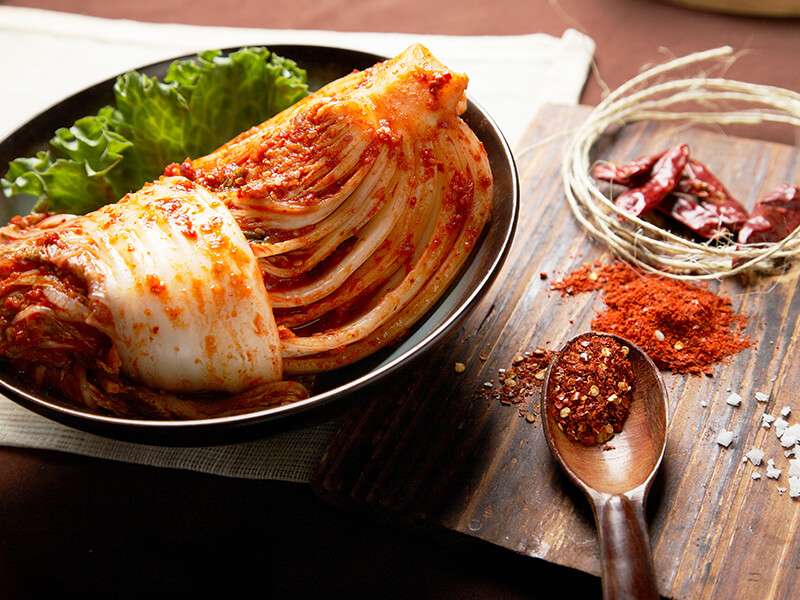
Kimchi is a fermented food, so you can keep it for a long time. However, you should limit the use or throw away kimchi when you detect the following signs.
- If you do not store kimchi well, it can be attacked by contaminants and becomes a favorable environment for mold development. When you find white spots in your kimchi jar, you should throw the kimchi away.
- Normal kimchi has a distinctive scent that you can easily smell. When you can no longer smell the characteristic smell of kimchi, it is no longer normal.
- Kimchi has a rather pleasant taste, but its taste becomes unpleasant when spoiled. You should not eat kimchi anymore when you taste a strange and unpleasant smell.
- When you notice that kimchi has become soft and mushy, you should not throw away your kimchi. It is better to consume it right away because it gets old.
Expand Your Understanding Of Kimchi’s Nutritional Content And Health Benefits
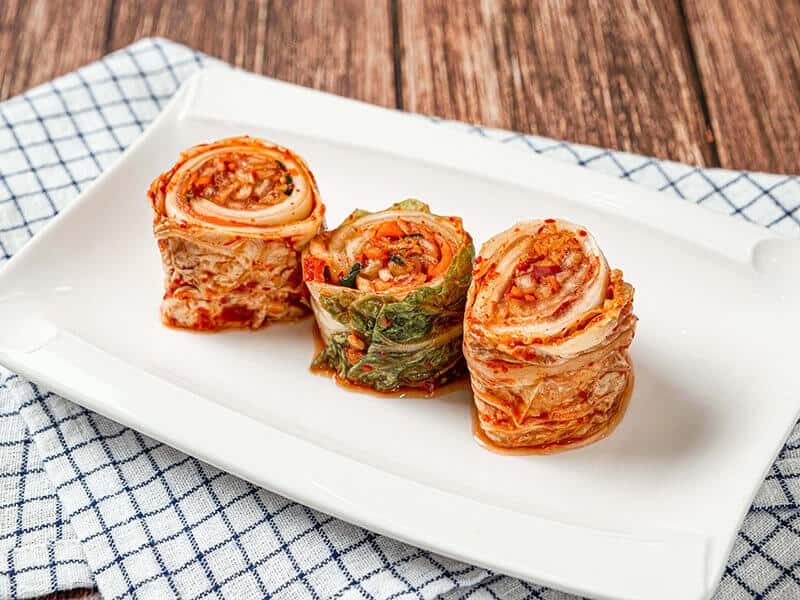
To understand more deeply about the nutritional and health values that kimchi can bring to you, I and you will explore what nutritional ingredients are inside kimchi and what effects they have on health.
1. Nutritional Facts Of Kimchi
Kimchi is a food that contains many different minerals, vitamins A and C. In addition, kimchi also contains more than 34 amino acids. However, kimchi is not a high-calorie dish. Because it is made from veggies, kimchi is a rich source of vitamin K and riboflavin.
It would help if you looked at the table to know how many nutrients are contained in 150 grams of kimchi.
| Nutrients | Contents (150 grams kimchi) |
| Calories | 23 |
| Carbs | 4 grams |
| Protein | 2 grams |
| Fat | 1 gram |
| Fiber | 2 grams |
| Sodium | 747 milligrams |
| Vitamin B6 | 19% of the Daily Value |
| Vitamin C | 22% of the Daily Value |
| Vitamin K | 55% of the Daily Value |
| Folate | 20% of the Daily Value |
| Iron | 21% of the Daily Value |
| Niacin | 10% of the Daily Value |
| Riboflavin | 24% of the Daily Value |
2. Some Positive Health Effects Of Kimchi
Most of the nutritional components of kimchi are beneficial for your health. Discover how your body will benefit from eating kimchi. Let’s go!
- The high vitamin K content in kimchi offers many health benefits. Vitamin K helps improve bone metabolism. Besides, riboflavin helps in cell growth, regulates energy production, and supports metabolism.
- Kimchi helps to improve your immune system. Kimchi and most other fermented foods contain lactobacillus bacteria. This is a type of bacteria that helps your immune system work better and stronger (1).
- Kimchi has an anti-inflammation function. Thanks to its probiotic content and compounds formed during fermentation, kimchi helps reduce inflammation.
- Prevent yeast infections with kimchi. Healthy bacteria and probiotics will stop the growth of harmful bacteria to prevent yeast infections (2)
- Lose weight better by eating kimchi. Kimchi has low-calorie content, so it will be very suitable for those who require weight loss.
- Kimchi improves heart health. The anti-inflammatory properties of kimchi will help reduce the risk of heart-related diseases (3).
FAQs
In this section, I will help you answer some frequently asked questions about the taste of kimchi. I hope my answers will satisfy your wishes.
Wrap Up The Taste Of Kimchi
With its variety of flavors, kimchi can bring rich flavor and value to dishes. In addition, kimchi also brings many benefits to your health. You should make a dish out of kimchi to enjoy right away.
Understanding the taste of food is extremely essential because you will know what flavor it should go with. It is my pleasure when you can gain more positive things from the information about the flavor of kimchi that I have provided.
Please like and share the article to support my team. I am looking forward to hearing other fantastic ideas from you via the comments. Thanks a lot!
References
- “Immunomodulatory Effects of Kimchi in Chinese Healthy College Students: A Randomized Controlled Trial.” July 2014, https://www.ncbi.nlm.nih.gov/pmc/articles/PMC4135247/.
- “Preventing Vaginal Yeast Infections With Lifestyle and Diet Changes.” Intermountain Healthcare, March 2018, https://intermountainhealthcare.org/blogs/topics/live-well/2018/03/preventing-vaginal-yeast-infections-with-lifestyle-and-diet-changes/.
- “Fermented foods: Favorable for heart health?” Harvard Health Publishing, 1 June 2019, https://www.health.harvard.edu/heart-health/fermented-foods-favorable-for-heart-health.



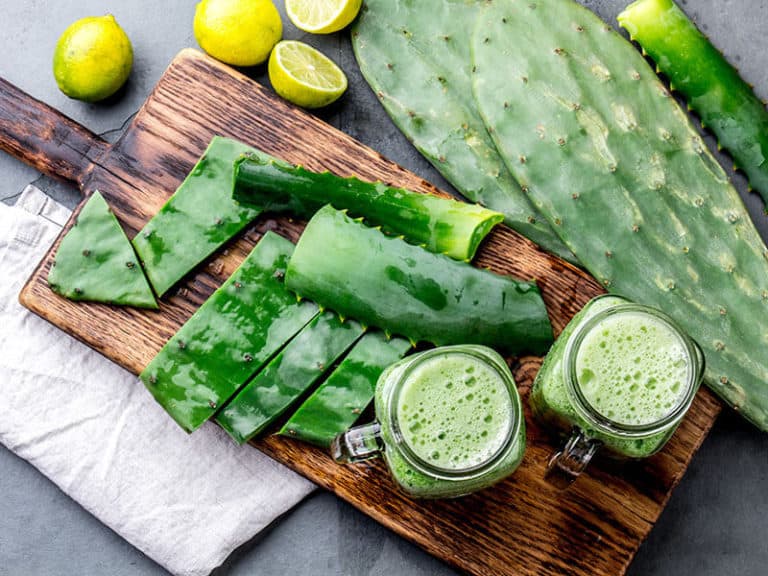

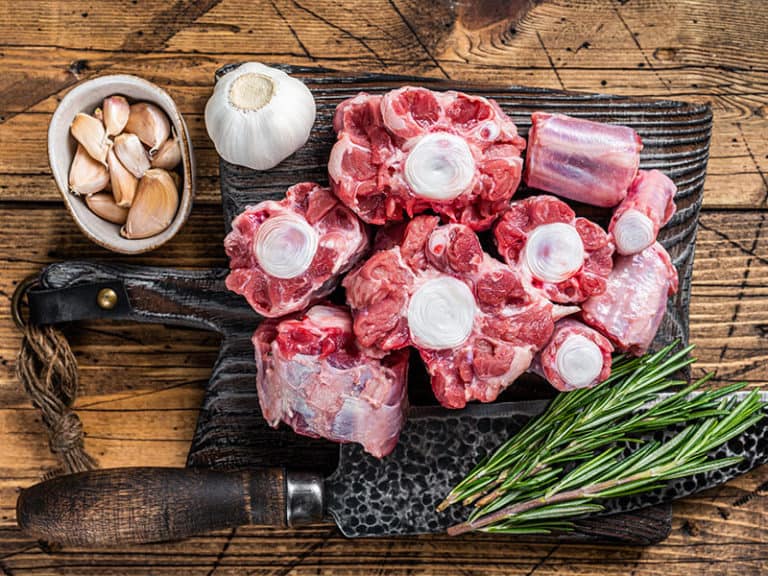
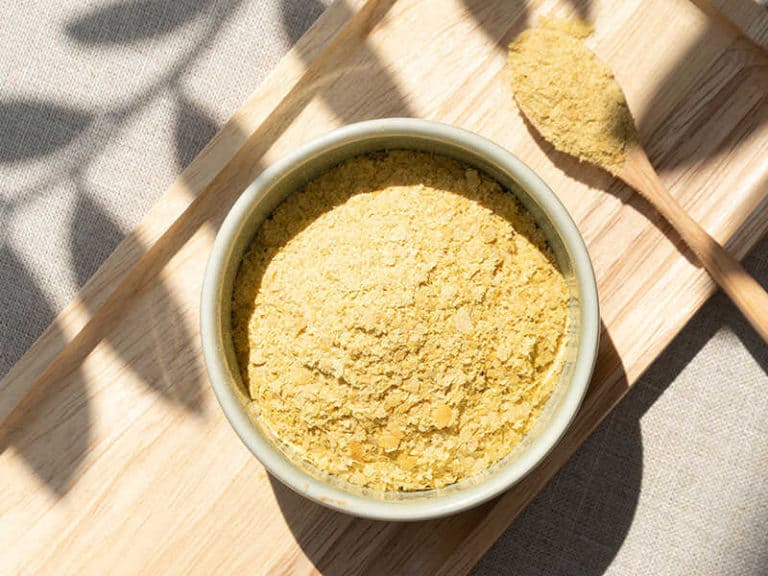
Amanda Collins
Founder and Senior Culinary Editor
Expertise
Culinary Arts and Management, Food Journalism and Critique, Recipe Development and Testing, Global Culinary Traditions, Sustainable Food Practices
Education
Institute of Culinary Education (ICE), New York, NY
Program: Diploma in Culinary Arts
Focus: Intensive hands-on training in culinary techniques, recipe development, and kitchen management, preparing students for professional roles in the culinary industry.
Monroe College, New Rochelle, NY
Program: Associate in Applied Science in Culinary Arts
Focus: Practical culinary skills, including cooking techniques, menu planning, and kitchen operations, with an emphasis on hands-on experience and industry standards.
Amanda Collins is a seasoned chef and food editor with a deep love for global flavors. Trained at the Institute of Culinary Education and Monroe College, and with over 15 years in the culinary field, Amanda has refined her skills in kitchens worldwide. Her background in food studies gives her a unique ability to share both recipes and the cultural stories that shape them.
As senior culinary editor at thebreslin.com, Amanda’s work brings authentic dishes to life, inviting readers to explore new flavors and techniques from around the globe. Her approachable style makes it easy for anyone to bring a bit of the world’s cuisine into their kitchen.